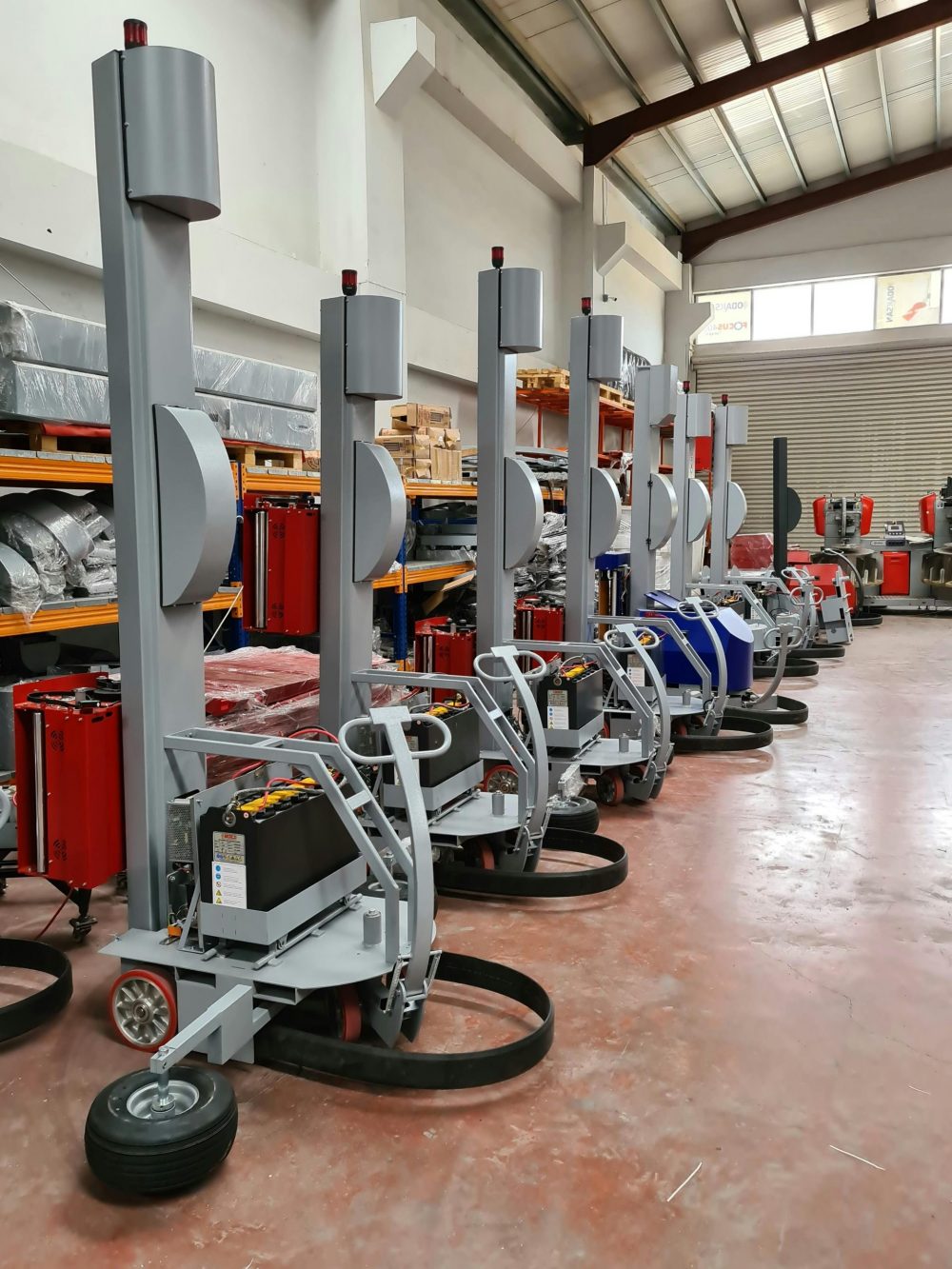
Introduction
Warehouses once ran on people, paper, and pallet trucks. That model now cracks under the surge of one‑day shipping. A logistics company in Kolkata faces two sharp forces: ever‑rising order counts and shrinking delivery windows. Manual routines stretch thin, accuracy drops, and skilled labor grows scarce. Managers hunt fresh tools that raise throughput without ballooning costs. Robotics answers that call, bringing speed, consistency, and data that guides each move.
Robots no longer feel like science fiction. Global suppliers ship thousands of units monthly, while Indian adoption climbs fast. The warehouse automation market in India could top USD 2.5 billion by 2033, posting double‑digit yearly growth. Such scale hints at a future where smart machines handle most intra‑logistics miles, with people steering higher‑value work. The shift promises safer floors, clearer insight, and healthier profit lines.
This blog unpacks how advanced robotics changes storage, picking, packing, and internal moves. Each section links proven tech with field results, offering supply‑chain leaders a roadmap. Throughout, we return to one guiding test: How will the change help a logistics company in Kolkata serve clients faster, cheaper, and greener?
1. Pressure That Pushes Automation Forward
Order profiles grow tricky. Average units per pick fall, return rates rise, and stock lines explode. Manual crews struggle to match this variety without extra headcount. Seasonal surges compound pain since short‑term hires need training yet quit when peak ends. Robots scale up or down on demand, keeping service levels steady while trimming overtime.
Safety plays a part. Workers walk miles each shift, lifting loads that strain backs and joints. Injury claims cut into margins and morale. Autonomous movers carry pallets, leaving staff to supervise screens instead of hauling goods. Fewer accidents mean lower insurance and happier teams.
Finally, clients want crystal‑clear status. Robots stream data each second, feeding dashboards with heatmaps of activity. Managers see stock dwell times, lane bottlenecks, and battery health at a glance. This insight helps a logistics company in Kolkata promise tight service‑level agreements with proof to back them.
2. Autonomous Mobile Robots (AMRs) Take the Floor
AMRs guide themselves with lidar, cameras, and onboard maps. They weave around racks and people, carrying totes or pallets to workstations. Vendors offer payloads from 300 kilograms to 1.5 tons, covering almost any task. The machines charge during idle slots, so fleets work around the clock with little downtime.
Route logic updates in seconds. When a forklift blocks an aisle, the fleet manager reroutes units through free lanes, avoiding jams. This flexibility beats fixed conveyor lines that stop when one link fails. Many firms report double‑digit cuts in travel distance after switching.
For a logistics company in Kolkata, AMRs shine in tight city warehouses where floor plans change often. The robots need no wires or magnetic tape. Teams rearrange racks overnight and map new layouts by morning, ready for business. Capex drops since costly fixed paths disappear.
Quick gains from AMRs
- Travel time down, fuel spend gone
- Live fleet health dashboards
- Safe interaction with people without cages
3. Robotic Picking Enters the Aisle
Grippers once lacked finesse, but new tactile sensors now read shape and weight in real time. Vision‑guided arms pick soft apparel, glossy cosmetics, and uneven produce with 99 percent accuracy. Analysts call physical manipulation the last hurdle to full automation in fulfillment.
Cycle times drop sharply. An expert picker may hit 120 lines per hour; robots paired with goods‑to‑person towers top 350 while working steady shifts. Lighting can dim since cameras use infrared, saving energy and cooling bills.
The return on picking bots grows when paired with AMRs that bring totes to static cells. Operators supervise multiple arms, stepping in only when the system flags an odd item. A logistics company in Kolkata gains a predictable rate regardless of labor swings during festivals.
4. Cobots Foster Human‑Robot Teamwork
Collaborative robots, or cobots, share space with staff without safety fences. Built‑in force sensors stop movement at contact, preventing injury. Market watchers list cobots as a top warehouse trend for 2025, crediting ease of use and quick setup.
Tasks like kitting, light assembly, and document insertion suit cobots well. Programming uses drag‑and‑drop screens or manual lead‑through, so engineers need no deep code. Small firms adopt one unit, learn the ropes, then scale.
At a logistics company in Kolkata, cobots can stage items while people handle exception cases or quality checks. This blend preserves tribal knowledge while lifting monotony from staff routines. Satisfaction rises, and turnover slips.
5. AI‑Driven Orchestration Becomes the Brain
Hardware shines only when software coordinates every move. Modern warehouse execution systems crunch orders, slotting rules, and robot availability to send tasks where they fit best. Amazon now trials agentic AI that speaks natural language to floor bots, letting them switch roles on the fly.
Machine learning spots subtle patterns: a certain SKU jams grippers unless loaded label‑up, or a battery pack underperforms after deep discharge. Algorithms adjust instructions in real time, raising uptime without human alerts.
This intelligence lets a logistics company in Kolkata push toward lights‑out nights. Robots work while crews sleep, clearing backlog for the morning shift. Energy rates drop during off‑peak hours, trimming utility bills.
6. Counting the Cost and the Payback
Robots demand capital, yet surveys show payback often arrives within three years when projects scale right. Grants and tax perks for green tech shorten that window. Firms also save on space since vertical storage grows with automation, delaying expensive new sites.
Hidden gains matter too. Stock accuracy shoots upward when scanners read each tote move automatically. Shrinkage falls, and customer claims shrink. Over one year, these soft wins can match hard labor savings.
Risk exists. Poor process mapping or undertrained teams stall adoption. Leaders should run pilot cells, measure throughput, and train champions before rolling out warehouse‑wide. A logistics company in Kolkata can partner with universities to build local service talent, lowering support costs over time.
7. A Practical Roadmap for a Logistics Company in Kolkata
Step one: audit current flows. Track walk paths, pick heatmaps, and error points. Align robot types to pain spots, such as long haul moves between inbound and packing.
Step two: start small. A three‑unit AMR fleet plus one cobot gives clear data on productivity without heavy outlay. Compare metrics against baseline each week.
Step three: scale with intent. Add software layers that unify fleets across sites, adopt standard spare part kits, and schedule preventive maintenance based on sensor alerts. This staged plan lets a logistics company in Kolkata grow tech muscle without choking daily output.
Roadmap checklist
- Map data flows early
- Pick partners with local support
- Train multi‑skilled robot leads
8. Sustainability Wins Add New Value
Electric robots cut diesel forklift fumes, making air cleaner for staff and neighbors. Battery life improvements mean longer shifts on a single charge while smart charging uses solar panels during sunny hours.
Heat from drive motors stays low, so cooling loads in the facility fall. Less noise also means better working conditions, which auditors note during social governance reviews.
Many shippers now score vendors on carbon per order. A logistics company in Kolkata that publishes robot fleet metrics can show credible progress on climate goals, beating rivals still tied to fossil fuel gear.
9. Real‑World Proof Points
British retailer John Lewis deployed high‑rise tote robots and cut storage costs while saving GBP 1 million in labor over peak season. Results confirm that dense automation wins when order spikes strain manual crews.
Indian food start‑ups use AMRs to shuttle meal kits from cold rooms to packing cells, keeping breakage low and throughput high during lunch rush. Managers report payback within twenty months, driven by labor savings and fewer spoilage claims.
These cases show that advanced robotics is not a theory. It produces line‑item gains that finance teams respect. Supply‑chain heads who wait risk falling behind peers who bank those savings today.
Conclusion
Advanced robotics reshapes intra‑logistics by boosting speed, accuracy, and insight while easing labor strain. AMRs move goods nonstop, grippers pick varied stock, and cobots work beside people safely. AI weaves the parts into one living system that learns each day.
Return on investment proves sound when leaders pilot smart and plan scale. Sustainability gains add bonus value, supporting carbon commitments that clients now demand. For a logistics company in Kolkata, the path is clear: map pain points, test small, then expand with data as guide.
The race will not pause. As unit volumes rise and delivery windows tighten, only warehouses that run on brains of silicon and hands of steel will keep pace. Adopting robotics now secures a seat at that future table.







